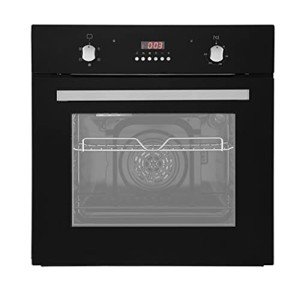5 Killer Quora Answers On Builtin Oven
페이지 정보

본문
The Comprehensive Guide to Built-In Ovens: Features, Benefits, and FAQs
Built-in ovens are a popular option for modern kitchen areas, offering adaptability, performance, and a smooth style that incorporates flawlessly into kitchen cabinetry. This article will look into the numerous aspects of built-in ovens, including their features, advantages, installation choices, maintenance pointers, Builtin oven and responses to typically asked questions.
What is a Built-In Oven?
A built-in oven is designed to be set up within kitchen cabinetry and is available in different setups, such as single or double ovens. Unlike freestanding ovens, built-in models provide a streamlined look and use more versatility in kitchen style. They are available in electric integrated oven, gas, and steam alternatives, dealing with a variety of cooking preferences.
Functions of Built-In Ovens
Built-in ovens are loaded with functions that improve cooking experiences. Here are a few of the most typical functions to consider:
| Feature | Description |
|---|---|
| Self-Cleaning | Numerous models consist of a self-cleaning function that burns residue at high temperatures, streamlining upkeep. |
| Convection Cooking | This feature utilizes a fan to distribute hot air, cooking food more uniformly and quickly. |
| Smart Technology | Some ovens come equipped with Wi-Fi connectivity, permitting users to manage the oven remotely through smart device. |
| Several Cooking Modes | Include options such as baking, broiling, roasting, and air frying, providing flexibility for various meals. |
| Temperature Probe | Keeps track of the internal temperature of food, ensuring completely cooked meals every time. |
| Sleek Design Options | Readily available in numerous surfaces (stainless-steel, black, white) to match kitchen design. |
Advantages of Built-In Ovens
The installation of a built-in oven brings various benefits to any kitchen:
- Space Efficiency: Built-in ovens make the most of kitchen space, offering a clean and organized look without sacrificing performance.
- Enhanced Cooking Performance: With innovative features like convection cooking and exact temperature controls, built-in ovens frequently surpass traditional designs.
- Style Flexibility: These ovens can be set up at eye level, allowing for simple access without bending down, which can be specifically beneficial for people with physical limitations.
- Improved Resale Value: A well-designed kitchen with high-quality built-in appliances might interest potential purchasers, boosting total property worth.
- Personalization Options: Many brands offer customizable designs that fit the particular measurements and aesthetic of specific cooking areas.
Installation Options
When selecting a built-in oven, understanding the setup choices is important. Here are the most typical setups:
Single Built-In integrated oven and grill: Ideal for smaller kitchens, these units provide enough area to cook a variety of meals simultaneously, perfect for everyday cooking.
Double Built-In Oven: best integrated oven uk suited for passionate cooks and large families, double ovens enable simultaneous cooking at 2 various temperatures, perfect for meals that require different cooking approaches.
Combination Steam and builtin Oven: A hybrid option that integrates the benefits of traditional baking with steam cooking. This alternative is excellent for keeping wetness in foods, making it perfect for baking bread or roasting meats.
Maintenance Tips for Built-In Ovens
Maintaining a built-in oven is essential for its durability and optimum efficiency. Here are some practical maintenance suggestions:
Regular Cleaning: Use the self-cleaning feature when essential, and wipe down the outside and interior surfaces frequently to prevent grease buildup.
Inspect the Seals: Inspect the oven door seals for any wear or damage to guarantee proper insulation and cooking efficiency.
Temperature level Calibration: Occasionally test the temperature accuracy utilizing an oven thermometer, particularly if cooking times seem longer than typical.
Ventilation: Ensure sufficient ventilation around the integrated oven hob & extractor packages to avoid overheating, particularly for built-in models that may be surrounded by cabinetry.
FAQs About Built-In Ovens
1. Are built-in ovens more costly than freestanding designs?Yes, built-in ovens tend to be more expensive due to their style, installation requirements, and extra features. Nevertheless, their benefits can validate the expense in the long run.
2. Can you install a built-in oven yourself?While some useful individuals may try to install a built-in oven, it is advised to employ an expert to guarantee appropriate setup, ventilation, and safety standards.
3. What is the typical lifespan of a built-in oven?The normal lifespan of a built-in oven is around 10 to 15 years, depending upon usage and maintenance. Regular care can assist extend its longevity.
4. Are built-in ovens energy effective?Numerous modern-day built-in ovens are designed with energy effectiveness in mind, incorporating features like insulation and accurate temperature controls that might lower energy consumption compared to older models.

5. Can a built-in oven be repaired if it breaks?Yes, built-in ovens can typically be fixed. It is suggested to get in touch with a qualified professional for medical diagnoses and repair work to guarantee security and compliance with warranty contracts.
Built-in ovens are an exceptional addition to any modern kitchen, offering a combination of design, performance, and advanced cooking functions. With the right knowledge about their functions, benefits, and maintenance, house owners can make informed choices to boost their culinary experiences. As kitchen style patterns continue to progress, the built-in oven stays a staple for those seeking to mix aesthetics with effectiveness in their cooking spaces.

- 이전글The Reasons You Shouldn't Think About Making Improvements To Your Robot Cleaner 25.05.18
- 다음글8 Tips To Increase Your Commercial Dual Fuel Range Cookers Game 25.05.18
댓글목록
등록된 댓글이 없습니다.